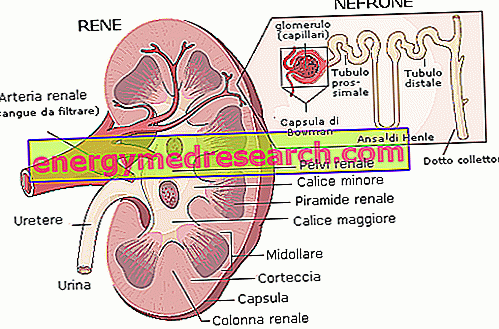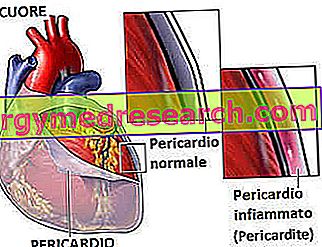What is Aldosterone
Aldosterone is a steroid hormone produced by the adrenal glands in order to regularize the levels of sodium, potassium and the volume of extracellular fluids. More specifically, aldosterone acts mainly on the kidney level:
- increases sodium reabsorption in the distal tubule and in the collecting duct;
- increases the elimination of potassium and hydrogenions.
Functions
The aldosterone is then secreted to rebalance the situation in conditions of hyperkalaemia (high concentration of potassium in the blood) or of hyponatremia (reduced plasma sodium concentration), while its release will be inhibited in the opposite conditions.
Since sodium retention increases the volume of circulating blood and with it arterial pressure and fluid retention, also hypovolemia, hypotension and vasoconstriction of the afferent renal arteriole represent a positive stimulus for the secretion of aldosterone. This second control mechanism is mediated by the renin-angiotensin system: when the above conditions are detected at the glomerulus level, some renal cells produce renin which, acting at the level of the hepatic angiotensinogen, promotes the synthesis of Angiotensin I, in turn converted in the lungs and in the vasal endothelium in Angiotensin II. This powerful arteriolar vasoconstrictor will therefore stimulate the production of aldosterone in the adrenal glands, with consequent savings in water and sodium.
A third regulatory system is mediated by various hormones, including ACTH, catecholamines and atrial natriuretic peptide.
The actions of aldosterone extend a little to all the cells of the body, where it acts by facilitating the entry of sodium and promoting the loss of potassium (sweat glands, intestines and tear glands). However, the main site of action remains the renal one: in the cytoplasm of the cells that constitute the last third of the distal tubule and the portion of the collecting duct that runs in the cortical area of the kidney, there are specific receptors for aldosterone that, once bound to the hormone, they express proteins able to increase sodium reabsorption at the tubular level and at the same time favor potassium secretion.

Aldosteronism
This term designates a condition characterized by excessive production of aldosterone. The most frightening consequence of this disease is hypertension, since the kidney retains significant amounts of sodium with a consequent increase in circulating fluids (more blood → greater obstruction to circulation → hypertension → cardiovascular damage).
Excessive levels of aldosterone are also accompanied by hypopotassemia, with the consequent appearance of increasing degrees of muscle weakness up to paralysis and cardiac suffering.
Hyperaldosteronism can be caused by an adenoma or bilateral hyperplasia of the cortical area of the adrenal gland. In the first case the surgical intervention can be decisive, while in the second one we will proceed with the assumption of specific drugs (antialdosteronics).
Hyperaldosteronism may also be secondary to the assumption of certain drugs (diuretics), renal artery stenosis and other conditions of reninism (increased release of primary or secondary renin), pregnancy or altered distribution of fluids in the extracellular compartment, such as in the presence of edema and in the course of liver cirrhosis or nephrotic syndrome. In all these cases there is a decrease in the volume which represents a stimulus for the renin-angiotensin system and the consequent production of aldosterone, whose plasma levels rise up to assume pathological connotations.



